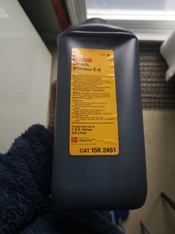Low pH is acid, so to get from neutral (pH 7) to the presumed pH 5 target, you'd need to add something acidic. High concentration acetic acid is common for darkroom use, but for photographic bleach sulfuric acid (sold as high power drain cleaner in home improvement stores) would also work. You'd use a titration process, adding a little acid and checking pH, until you're close to your target. Pure acetic acid has a pH close to 5, though, so if that's the target for your bleach, you'll probably need something stronger. Do read up on safe use of strong acids before buying or using the concentrated sulfuric sold as drain cleaner, though...
Complicating this is that most photo chemicals that need to be close to particular pH value contain a "buffer" system -- an acid and alkali working against each other to keep the pH in a small range even if other stuff gets into the mixture. We don't (AFAIK) know what the buffering system was for this E6 bleach, so we'd be guessing.












